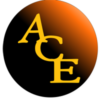ACE recommendations on accessory dwelling units | Guest View
Posted Wednesday, January 10, 2024 9:00 pm
Karen Haase Herrick | ACE President
Edmonds’ Planning and Development Department has recently proposed its code update for accessory dwelling units in the City.
The issue was discussed at the upcoming Planning Board meeting Jan. 10, with a public hearing anticipated Jan. 24. The Alliance of Citizens for Edmonds (ACE) wants to express its concerns about the proposal, urging citizens to weigh in on the issue.
The new ADU law is a significant departure from past zoning practices in the state that will dramatically alter the landscape and almost certainly have undesired consequences. Given this, ACE believes the City of Edmonds should be guided by the following overarching principle: Initially implement the requirements of the law (EHB1337) without going beyond its mandates.
Further, after a period of one to two years, the impacts of implementation should be assessed before code parameters are expanded beyond the law’s requirements.
The Planning and Development director has acknowledged that the City needs to quantify the results of implementation of these laws so that expanded growth is in line with actual future needs. ACE urges staff to keep the above principle front and center when revising codes to align with new laws.
Planning and Development has increased the floor area threshold from 1,000 to 1,200 square feet, ostensibly to ensure that two bedrooms may be accommodated.
New two-bedroom apartments in Edmonds are in the range of 1,000 square feet. (Hazel 2-bedroom units range 920 to 1,040 square feet.; Westgate 2-bedroom units range 815 to 885 square feet.)
ACE supports establishing a limit at two bedrooms. More bedrooms than that in a small unit would reduce the quality of living space and functionality for those with mobility issues.
Three bedrooms would be inappropriate, as ADUs are intended as accessory units, not additional primary residences on a lot. ACE believes the 1,000-square-foot limit should be maintained.
Planning and Development proposes reducing rear setbacks “in some instances,” which ACE does not support due to impacts that could have on views, light in surrounding homes, and loss of trees.
ACE recommends addressing rooftop decks, preferably not allowing them on two-story buildings that are at the 24-foot height limit.
ACE recommends that minimum lot sizes be established for the addition of structures on lots, especially since additional legislation may be enacted to allow lot splitting, which would cut the size of parcels by half.
Planning and Development’s summary of changes does not address impact fees. EHB1337 allows for impact fees no greater than 50% of the home on the lot.
Additional ADU/DADU housing will have an impact on street maintenance. Thus, reduced fees are appropriate. Impact fees should be included in the permit costs.
ACE recommends the issue of view corridor impacts be addressed. As homeowners with water views are assessed extra property taxes for views, allowing a new building that diminishes that view has an adverse impact on view homeowners.
Please add a mechanism or process to engage potentially affected neighbors to address their concerns and mitigate any negative effects.
Achieving clarity in the code is crucial to providing clear guidance for adding accessory dwelling units. This to avoid confusion and waste of time and effort in process. Clarification is needed in these areas:
1) It is unclear how accessory units will be counted relative to EHB1337 and E2SHB1110. Will each be counted as a unit under the middle housing designation? Can each lot have a maximum of two ADU/DADUs regardless of the type and size of the primary dwelling on the parcel?
2) The proposed statement on planned resident developments (PRDs) should be strengthened by clarifying that it refers to those that have no (Homeowners Association) HOAs or covenants, conditions, and restrictions (CCRs).
3) Reinforce that off-street parking will be required if the lot is further than half a mile from a major transit hub.
4) Clarify how units’ heights will be measured, especially on sloped lots.
5) Reiterate that engineering, stormwater management, setbacks, and impermeable surface limits will remain in place as environmental and climate change buffers.
6) Confirm the uniqueness of Edmonds’ topography with its hillsides and critical areas that may limit use of accessory units on some lots.
Finally, ACE recommends that the code update be a one-, not a two-step process. The City should avoid rushing a set of interim changes intended as a stopgap measure to allow immediate implementation of the new rules.
Hasty writing of new code may result in unintended consequences hard to correct later. We recommend a more deliberate single approach, resulting in a more reliable code later.
The Alliance of Citizens for Edmonds looks forward to a new code that aligns closely with EHB1337 and affords clear guidance in constructing accessory dwelling units.
ACE encourages citizens to participate in the preparation of the code by contacting City elected officials and staff and attending the public hearing Jan. 24 at 7 p.m. in the Brackett Room of Edmonds City Hall.
